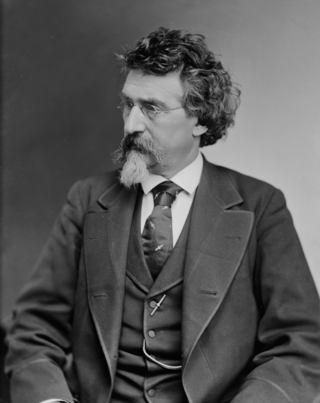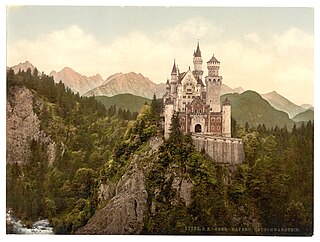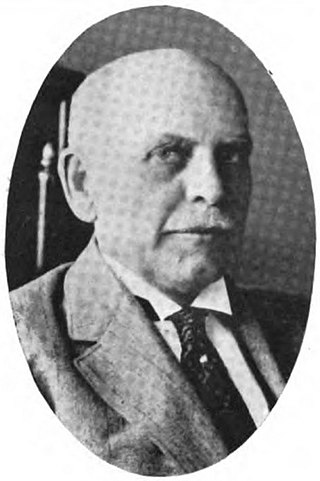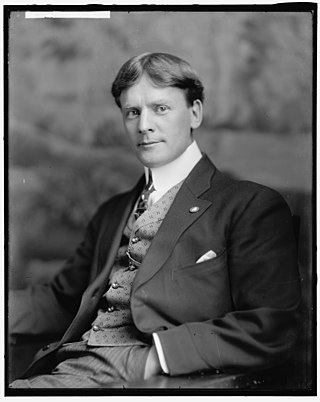
The Detroit Publishing Company was an American photographic publishing firm best known for its large assortment of photochrom color postcards.

The Detroit Publishing Company was an American photographic publishing firm best known for its large assortment of photochrom color postcards.

The Detroit Publishing Company was started by publisher William A. Livingstone and photographer Edwin H. Husher in the late 19th century as the Detroit Photographic Company, it later became The Detroit Photochrom Company, and it was not until 1905 that the company called itself the Detroit Publishing Company.
The company acquired rights to a color printing process developed by Hans Jakob Schmid of Orell Fussli & Company of Switzerland called Photochrom. Photochrom allowed for the company to mass market postcards and other materials in color. The Detroit Publishing Company started to market this in 1907 under the name "photostint." [1]
By the time of World War I, the company faced declining sales both due to the war economy and the competition from cheaper, more advanced printing methods. The company declared bankruptcy in 1924 and was liquidated in 1932.
The best-known photographer for the company was William Henry Jackson, who joined the company in 1897. He became the plant manager in 1903, and in 1905 the company changed its name.

A postcard or post card is a piece of thick paper or thin cardboard, typically rectangular, intended for writing and mailing without an envelope. Non-rectangular shapes may also be used but are rare.

The cyanotype is a slow-reacting, economical photographic printing formulation sensitive to a limited near ultraviolet and blue light spectrum, the range 300 nm to 400 nm known as UVA radiation. It produces a cyan-blue print used for art as monochrome imagery applicable on a range of supports, and for reprography in the form of blueprints. For any purpose, the process usually uses two chemicals: ferric ammonium citrate or ferric ammonium oxalate, and potassium ferricyanide, and only water to develop and fix. Announced in 1842, it is still in use.

Mathew B. Brady was an American photographer, one of the earliest and most famous in American history. Best known for his scenes of the Civil War, he studied under inventor Samuel Morse, who pioneered the daguerreotype technique in America. Brady opened his own studio in New York City in 1844, and went on to photograph U.S. presidents John Quincy Adams, Abraham Lincoln, and Martin Van Buren, among other public figures.

Sergey Mikhaylovich Prokudin-Gorsky was a Russian chemist and photographer. He is best known for his pioneering work in colour photography and his effort to document early 20th-century Russia.

William Henry Jackson was an American photographer, Civil War veteran, painter, and an explorer famous for his images of the American West. He was a great-great nephew of Samuel Wilson, the progenitor of America's national symbol Uncle Sam. He was the great-grandfather of cartoonist Bill Griffith, creator of Zippy the Pinhead comics.

Photochrom, Fotochrom,Photochrome or the Aäc process is a process for producing colorized images from a single black-and-white photographic negative via the direct photographic transfer of the negative onto lithographic printing plates. The process is a photographic variant of chromolithography. Because no color information was preserved in the photographic process, the photographer would make detailed notes on the colors within the scene and use the notes to hand paint the negative before transferring the image through colored gels onto the printing plates.

Deltiology is the study and collection of postcards. The word originated in 1945 from the collaboration of Professor Rendell Rhoades (1914-1976) of Ohio and colleagues at Ohio State University. A biographical sketch of Dr. Rhoades life by his wife Nancy, was provided to the Canadian Friends (Quaker) Historical Association in 1994. Dr. Rhoades had responded to a contest by Editor Bob Hendricks in Post Card Collectors Magazine to create a more scholarly name for the hobby of postcard collecting. 'Philocartist' was a term used in the early 1900s, possibly coined by the noted early philatelist Fred Melville in his 1903 publication The A.B.C. of Stamp Collecting

Félix Adrien Bonfils was a French photographer and writer who was active in the Middle East. He was one of the first commercial photographers to produce images of the Middle East on a large scale and amongst the first to employ a new method of colour photography, developed in 1880.

R.R. Donnelley is an American integrated communications company that provides marketing and business communications, commercial printing, and related services. Its corporate headquarters are located in Chicago, Illinois, United States. In 2007, R.R. Donnelley was the world's largest commercial printer. In 2021, it was referred to as North America's largest.
Edward Burgess Hudson (1854–1936) was the founder of Country Life magazine in 1897.

A real photo postcard (RPPC) is a continuous-tone photographic image printed on postcard stock. The term recognizes a distinction between the real photo process and the lithographic or offset printing processes employed in the manufacture of most postcard images.

Collotype is a gelatin-based photographic printing process invented by Alphonse Poitevin in 1855 to print images in a wide variety of tones without the need for halftone screens. The majority of collotypes were produced between the 1870s and 1920s. It was the first form of photolithography.

Alfred Lucking was an American lawyer and politician from the U.S. state of Michigan. He served as a member of the United States House of Representatives, and was general counsel for the Ford Motor Company and the Henry Ford interests.

Harris & Ewing Inc. was a photographic studio in Washington, D.C. established by George W. Harris and Martha Ewing. As a full service studio, it did portraits and also had a news photo service. Various museums and the Library of Congress have collections of their photographs.
Lakeside Press was a Chicago publishing imprint under which the RR Donnelley Company produced fine books as well as mail order catalogs, telephone directories, encyclopedias, and advertising. The Press was best known for its high quality editions for the Chicago Caxton Club as well as the Lakeside Classics, a series of fine reprints.

Henry Troth was an American pictorialist photographer known for his original platinum photographs taken during the 18th-19th century. He developed his special platinum prints from the late 1880s until his death.
The Camera: A Practical Monthly Magazine for Photographers was originally issued by the Columbia Photographic Society of Philadelphia under various subtitles, and continued publication until July 1953.

Coon cards were anti-black, racist picture postcards and greeting cards sold in the United States in the 19th and 20th centuries. Coon was short for raccoon, an American mammal; coon was a commonly used derogatory term for African-Americans.
A large collection of photographs was created by two generations of photographers based in Barrow in Furness, Lancashire. The collection is currently being catalogued before being deposited in Cumbria Archives, where they will be available through their online catalogue CASCAT.

Carl Moon was an American photographer, book and magazine illustrator, painter and writer focused on Native American subjects. He has been called "the imitator of Edward Curtis" and "the last of the great early photographers to go west."
Most of the existing negatives and prints are now housed by the United States Library of Congress, which received them via the Edison Institute and the Colorado Historical Society in 1949. Most images are visible in digital form at the Library of Congress Web site.